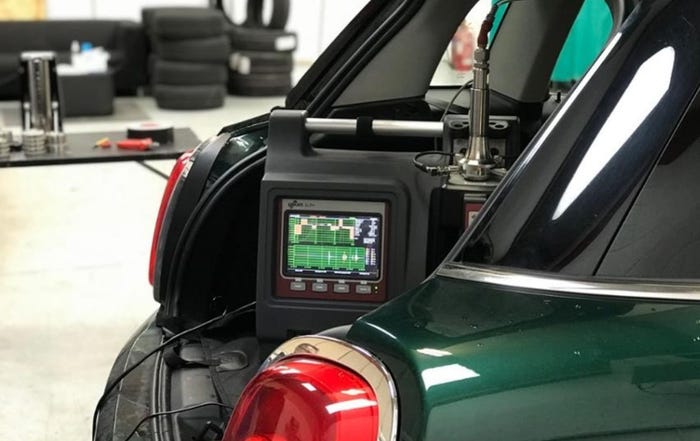Auto Industry's HMI Quandary Remains
WITH FIVE CHILDREN BETWEEN THE AGES of 18 and 28, Bob Drury has a live-in consumer clinic that informs his job as director of engineering for the instrumentation and driver HMI business unit at Continental. I never see them without some sort of mobile device in their hands, Drury says on a panel exploring design options for the center stack and human-machine interface. There's always this interaction

WITH FIVE CHILDREN BETWEEN THE AGES of 18 and 28, Bob Drury has a live-in consumer clinic that informs his job as director of engineering for the instrumentation and driver HMI business unit at Continental.
“I never see them without some sort of mobile device in their hands,” Drury says on a panel exploring design options for the center stack and human-machine interface. “There's always this interaction with others, always a connection with the outside world.”
These young consumers expect to seamlessly integrate their mobile devices into vehicles and to operate them whenever necessary. The auto industry is wrestling with approaches to justify that desire with the need for safe motoring.
After more than a decade of integrating connectivity in vehicles, auto makers remain hampered by a product-development cycle that continues to lag well behind that of consumer electronics.
“Consumer electronics cycling is six to eight months. In automotive, it's at five to seven years,” says panelist Rodger Eich, industrial design studio manager for Johnson Controls.
Eich calls it an exponential gap that is “proliferating at such a rate that we're having a difficult time keeping up.” Smartphones with “pages and pages” of applications require so much attention of the user that, “You have to ask yourself, when is it too much for the end user?”
The center stack of the instrument panel is the epicenter of the debate.
It started when navigation screens began appearing in luxury cars in the 1990s, and those displays eventually evolved to incorporate other functions.
The rest of the dashboard also has evolved as mechanical buttons, knobs and switches are being replaced by capacitive touch sensors, which provide new styling options. And voice activation is becoming more common and improving.
Moderator Pat Murray, owner of Murray Design and formerly at Lear and General Motors, recalls years ago when auto makers and suppliers were toiling to integrate display screens on dashboards.
“When we first were successful, we were spending about $400 to get this display that replaced maybe $50 worth of buttons and knobs. It didn't really solve the problem,” Murray says. “But once navigation came in and the display was going to be there, designers started to leverage that.”
Display screens are commonplace now, but Murray says the quandary remains: “At what point do we have the technology driving the design solution, rather than the user experience driving the design solution?”
Steve Tengler, user-experience director at Altia, says the industry needs to understand the terms before a solution can be found.
He defines “user interface” as the combination of system hardware and software that allows a user to interact with a particular medium, while “user experience” is a broader umbrella that takes into account customer perception, the purchase experience and daily usage.
“Can I design for user experience? I would argue you can. In fact, in a way, that should be our shoot-for-the-moon challenge,” Tengler says.
He urges designers and engineers to leave their offices and observe consumers and how they interact with vehicles and mobile devices.
“Do ride-alongs, those types of things,” he says. “Understand their situations.”
Eich says he's learning a lot from his 3-year-old son. “Watch children walk up to large displays and TVs, and they start touching them,” he says.
“There are some insights in how consumers are being shaped by the technology. They expect certain things. We are all programmed by our environments around us.”
Auto makers take risks when they introduce new interface technologies. Criticism of BMW's iDrive controller has softened in recent years, but Ford's MyFord Touch has been under fire more recently for its complexity.
Drury defends Ford's decision to bring the technology to market. “It may be too much content, and maybe some things need to be blocked during vehicle motion,” he says.
“But they're doing it. They're getting user feedback and…the platform's there. It's going to be available for future applications. I give them a lot of credit.”
Tengler sees furor over the Ford system as “kneejerk reaction” directed at driver distraction.
“I think society needs to calm down a bit and, like an engineer, figure out the big problem,” he says, citing alcohol as a much more severe threat to safe driving.
For complete conference coverage, go to AutoInteriors.com
Read more about:
2011About the Author
You May Also Like





